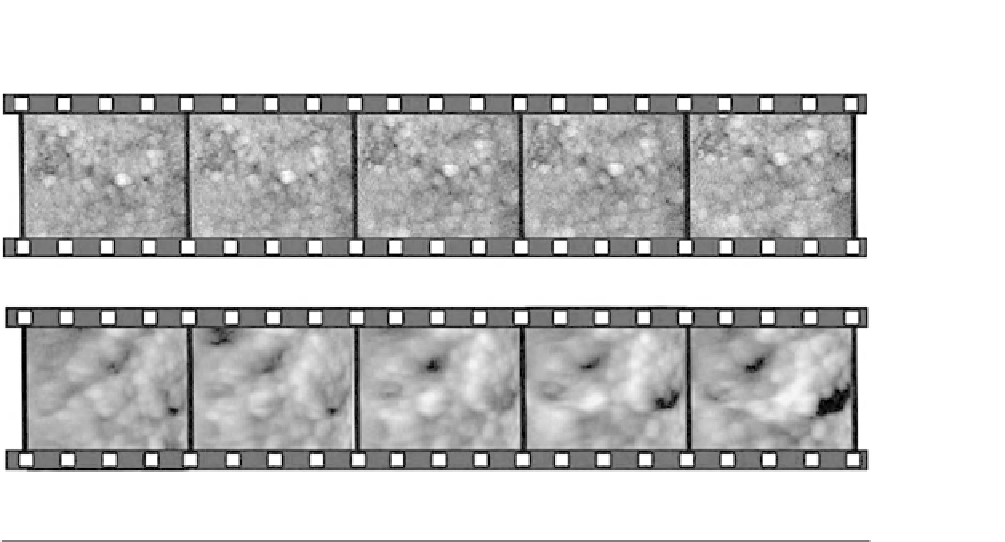Biomedical Engineering Reference
In-Depth Information
(A)
0 s
5 s
10 s
20 s
50 s
(B)
0 s
1 s
4 s
7 s
11 s
FIGURE 7.27
Sequences of HS-AFM images of an HAP surface taken (A) in water (3
µ
m
3
3
µ
m) and (B) in citric acid at
pH 3 (1.5
m
1.5
m). Time is indicated in seconds under each image.
µ
3
µ
From Ref.
[81]
.
The spatial and time resolutions of HS-AFM are on the order of nanometers and milliseconds,
respectively, and allow structural and functional characterization of biological processes at the
single-molecule level
[80]
.Pyneetal.
[81]
used HS-AFM to study the demineralizing effect of
citric acid on enamel. They imaged the dissolution of enamel in a real time or movie mode and
concluded that the HS-AFM is able to follow the large changes in height (on the micrometer scale)
that occur during the dissolution process (
Figure 7.27
). Such real-time imaging can provide dental
profession with valuable data on how surface conditioner interacts with dental substrates and how
we can make use of these data to improve the outcome of the restorative procedures.
7.10
Conclusions and future directions
Nanoscience and nanotechnology will have strong impact on adhesion to dental substrates through
the development of nanofilled dental adhesives with improved mechanical properties. Stronger
adhesive junctions with much less defects and more durability will be achieved through improved
penetration of the adhesives, antibacterial potential, and self-healing capacity.
Adhesion to oral mucosa will be an efficient route of nanodrug delivery where oral adhesive
patch, tablets, or stripes could be loaded with nanocarriers with controlled drug release and other
benefits could be obtained through administering the drugs via buccal mucosa. Among the various



